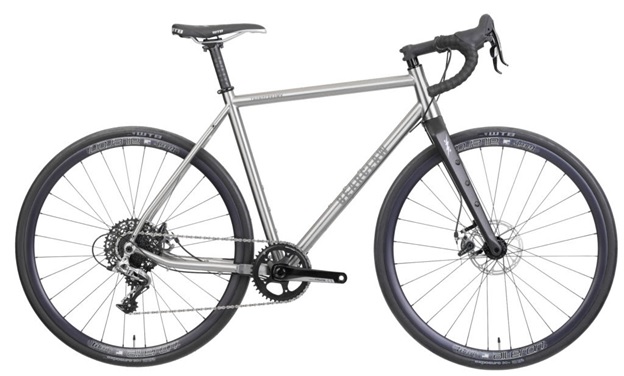Titanium Bikes: A Modern Take on an Old Material
Dating back as far as the 1960s, the first-ever titanium bikes were being built by a progressive race bike manufacturer known as Teledyn. The California-based bike company developed the Titan model in the 1970s, which quickly caught on as a high-performance titanium bike.
Since then, titanium bikes have maintained an authoritative reputation in the greater world of bicycles. Well-known for its durable resilience, outstanding longevity, lightweight frame, and corrosive-resistant properties, titanium has become a hot commodity across all types of cycling, ranging from road to gravel bikes and competitive racing to leisurely touring.
Titanium Takes Bloom in the Bike World
Titanium didn’t attract widespread attention as a high-end bike frame material until the 1990s. When tour racing and the bike technology that went with it picked up traction, any performance advantage was exploited to its fullest potential. Titanium is lighter than steel, more robust than aluminum, and easy to work with compared to carbon fiber. It wasn’t before long when numerous race bike manufacturers jumped on the bandwagon. From tour riding to triathlon, titanium gained popularity in all calibers of cycling.
Carbon was at the time, and still remains to be, one of the most common mainstream materials for performance cycling. It can be easily mass-produced at relatively efficient costs and delivers incredible weight advantages without compromising on ample strength.
By the year 2000, as titanium gained popularity in other sporting goods applications, other cycling subcultures started adopting titanium bikes. Not only was titanium a preferred choice in off-road bike races, including mountain, gravel, and cyclocross, but it was also a beneficial option for road bike riding, bikepackers, and adventure cyclists who value lightweight and extreme durability.
A Modern Take on Titanium Bike Innovation
Titanium checks all the boxes for performance, comfort, and longevity, meeting the demands of both competitive cyclists and everyday riders. From delivering optimal agility, weight, stiffness, and responsiveness to offering superior corrosion resistance and decades-long lifespans, a great deal of focus has been put into titanium bike technology in the last several years.
Bespoke titanium bike builders and frame manufacturers provide a custom, artisan product that some buyers value when investing in a bike. More and more bike manufacturers and builders are pushing the envelope with innovative titanium bike builds and components. One of the most popular components is titanium forks, which greatly improve the smoothness on rough terrain but also deliver exceptional responsiveness and low weight.
Alternatively, on the race performance side of things, manufacturers are producing bikes for terrain-specific riding, such as the quintessential titanium gravel bike or hardtail mountain bike.
Today, it’s now very common to see bike companies developing titanium forks, seatposts, pedals, and other components to continue pushing the envelope. Largely in an effort to save weight and maximize riding smoothness across varied terrain, the ingenuity behind titanium bike technology continues strong in the greater cycling community.
Not only do titanium bikes last several decades with good maintenance and care, but they also provide a range of performance and functionality advantages. A fantastic material option for bikepacking, mountain biking, gravel, and road, titanium bikes will be a longstanding choice among savvy cyclists.
Tyler Tafelsky is a cyclist and sports blogger for bettertriathlete.com.


Thanks for every other fantastic article. Where else may anybody get
that type of info in such a perfect manner
of writing? I’ve a presentation subsequent week, and I’m at
the look for such information.